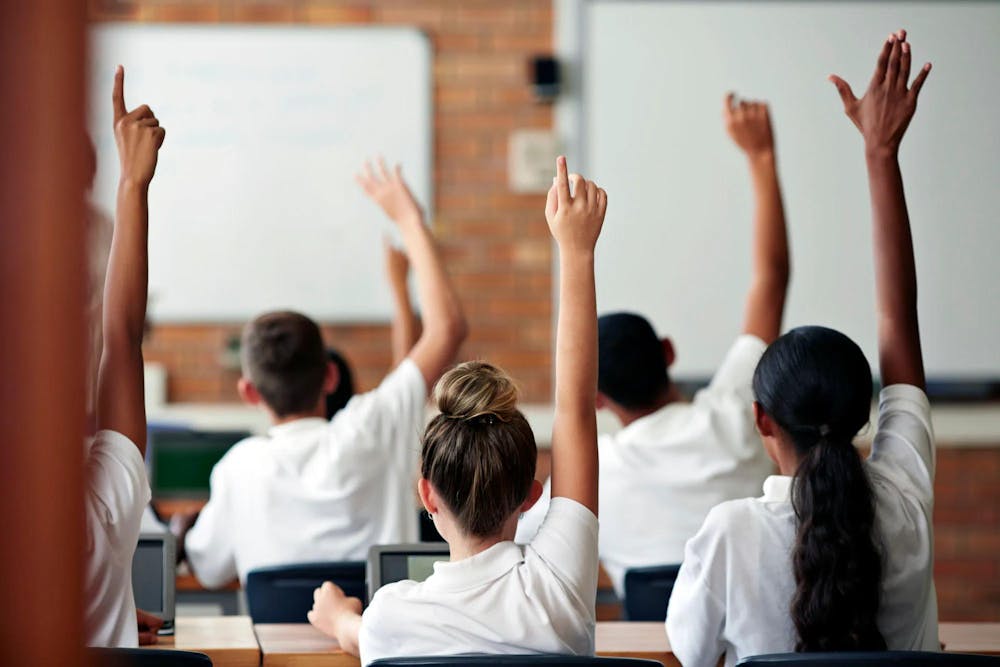This story was written by Casey Smith. It was originally published by the Indiana Capital Chronicle here: https://indianacapitalchronicl...
Indiana’s private school voucher program enrollment jumped about 32% in the most recent school year, marking a historic single-year jump, according to the state’s latest voucher report.
The state-funded program enrolled a record 70,095 students in 2023-2024, costing taxpayers $439 million — which is around 40% higher than the $311 million spent on vouchers in the year prior.
Even so, the report noted that — had all Hoosier voucher users attended their traditional public schools — the state would have paid around $516 million in education expenses. That’s because vouchers are paid at a lower amount than public school funding.
After widening the Choice Scholarship Program in 2022, state lawmakers further expanded the voucher system in 2023 to be nearly universal and open to almost all Hoosier families.
Since the changes took effect, eligibility for the scholarships — which allows families to receive vouchers to attend private schools — have expanded to include households with incomes up to 400% of the amount required for a student to qualify for the federal free or reduced price lunch program, equal to about $220,000.
The latest numbers
The new statewide report released on Friday indicates that the latest surge in voucher participation was largely driven by students from wealthier families.
The average family income for a voucher student in 2023-24 was $99,121 — an increase of more than 20% from the previous year. That’s well above the state’s median household income of about $67,000, according to the U.S. Census Bureau.
Almost 8,000 students in the latest cohort came from households making between $150,000 to $200,000 annually — up from 2,800 in 2022-23.
Voucher students from families making more than $200,000 increased even more — roughly tenfold — from 354 students in 2022-23 to about 3,700 in 2023-24.
Across other income brackets, around 2,000 more students came from families with incomes of up to $50,000, while another 2,000 came from households making between $50,000 and $100,000. More than 4,000 additional students came from families with incomes between $100,000 to $150,000, according to the report.
Two-thirds of voucher recipients in the last school year had never attended an Indiana public school, an increase of about four percentage points from 2022-23.
In total, 6.1% of all Indiana public and private-school students received a voucher in 2023-24, up from around 4.7% the year before, according to the report.
Data shows white students make up the majority of voucher users at 64%. Hispanic students account for 17.3% of voucher participants, while Black students make up just shy of 9%.
The average award amount was $6,264 and the average tuition and fees at a private school was $7,749, according to the report. Vouchers provide 90% of the amount of state-funding a public school corporation receives for each student, or covers all tuition and fees, whichever is lesser.
An ongoing push to increase vouchers
Indiana voucher participation has grown rapidly since the program began in 2011, when less than 4,000 students used a Choice Scholarship. Spearheaded by then-Gov. Mitch Daniels, the program intended to help children from poor families find alternatives to low-performing public schools.
Indiana is now one of 16 states with publicly funded vouchers, according to EdChoice, an Indianapolis-based group that backs voucher programs.
But critics have long argued that most Choice Scholarship students will attend private schools with or without a voucher, meaning their tuition is an added expense for taxpayers and only the state’s wealthiest will benefit.
Public schools officials and teachers unions also remain opposed to Choice Scholarship expansions, arguing that its projected cost over the next two years will stymie K-12 education funding increases for public schools. They point to state law, too, that allows voucher schools to reject students for their religion, disability, sexual orientation, gender identity, or academic ability, among other reasons.

In a Friday statement, the leader of Indiana’s largest teachers’ union said he was “deeply concerned” about the growth of the private school voucher program in the last year.
“This expansion, extending vouchers to wealthier families, funnels public funds to those who can already afford private schools. This shift adds a financial burden on the state without reducing public school costs, undermining claims of state savings,” said Keith Gambill, president of the Indiana State Teachers Association (ISTA). “Instead of helping wealthy families attend private schools at the expense of public school kids, we should be investing these tax dollars in our public schools.”
Still, change could be on the horizon for the state’s voucher system.
During the most recent 2024 legislative session, Sen. Ryan Mishler, R-Mishawaka, previewed his own proposal to completely overhaul Indiana’s private school vouchers with a grant program that would allow all Hoosier families — regardless of income — to choose where their students get educated.
Although the bill did not advance, discussion at the Statehouse previewed likely legislative momentum in 2025, when the General Assembly reconvenes to craft the next state budget.






